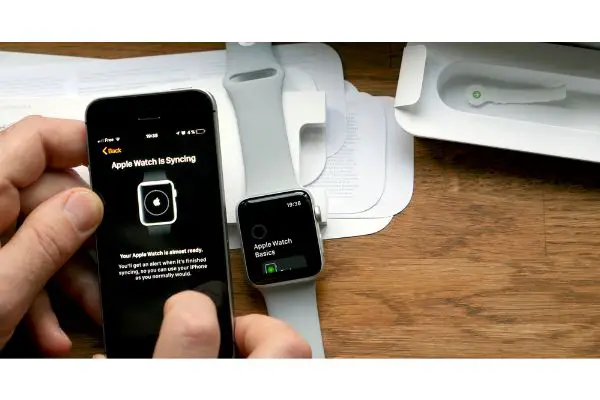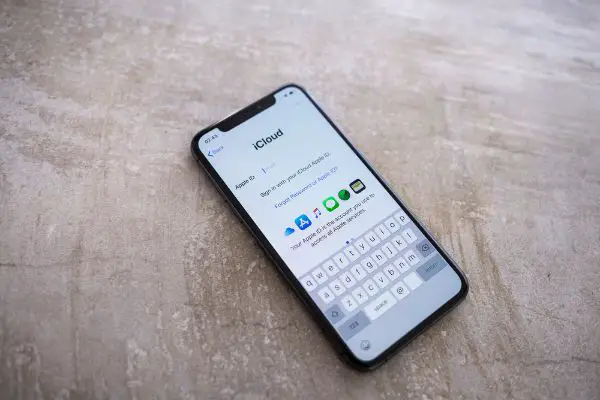Disclaimer: This post may contain affiliate links, meaning we get a small commission if you make a purchase through our links, at no cost to you. For more information, please visit our Disclaimer Page.
Syncing your iPhone and computer or other devices is an easy way to share data across your devices. However, this process might take longer than necessary if there’s a large data size or a poor network. Corrupted apps or files could also prolong the syncing process.

(Attribution: ©[ifeelstock]/Depositphotos.com)
Table of Contents
Why Is My iPhone Taking so Long to Sync?
Can you imagine the stress of picking up different devices for every information you want to access? Syncing helps you spread your important files across all your devices, making it easy to find them on any device when needed.
You can sync your iPhone with your iPad or computer, and there are two ways to sync it with your computer: iTunes and iCloud. iCloud may be more convenient since you can sync it from anywhere with a good internet connection. However, you have more control overall with iTunes.
Many things go on when syncing your iPhone, and any of them could be why the sync time is longer.
Here are some reasons:
iTunes backup
If you are syncing via iTunes, expect a backup before the syncing starts. Apple’s iTunes performs this backup to prevent data loss from your iPhone. The backup also makes it possible for you to restore your device in the event of a crash.
The backup items include camera roll photos, contacts, settings and preferences, app data, call history, calendars, messages, voice memos, notes, etc. Too many items and large files will slow the backup.
Your phone’s power management
Battery power affects the synchronization process, specifically if you plug your phone in. Like a regular iPhone backup that requires your phone to be connected to a power source, syncing might need it. This will be evident if you sync via iCloud or over Wi-Fi with iTunes.
low-quality network connection
Media files take a long time to download and upload, and the network quality determines how fast or slow it’ll go. Your iPhone will take a while to sync if your network quality is low (a shaky 3G or terrible Wi-Fi connection).
iPhone in Low Power Mode
The good thing about syncing is you can set it to happen automatically or manually. Unfortunately, with your phone in Low Power Mode, images won’t sync automatically or sync to iCloud. Also, exiting this mode doesn’t mean the sync will speed up.
Once you exit the Low Power Mode, you must charge your device. Sending the images to iCloud will take time, and it’ll take longer to sync them to your other devices.
Large files
Your pictures aren’t the only media or data that can suck up all the megabytes on your iPhone. Some notes in the Notes app and voice memos also create large files. Add these to the pictures and videos in multimedia messages, and your backup and sync time will increase.
Your first sync
Syncing or backing up for the first time will take longer than subsequent backups. For example, iTunes may take several minutes to build a database file at your initial syncing.
When you sync after the first time, iTunes and iCloud only add new data to the existing database. So it may also take a long time if you have a lot of new data to add.
Photos in your phone’s camera roll
The size of your photo and video collection determines your sync speed. If your library is extensive, your iPhone will sync for a long time. However, several megabytes per photo with thousands of images will slow down the sync significantly.
Corrupted files or apps
Occasionally, a long sync time results from corrupted data in your phone. For example, maybe you downloaded something off the internet that introduced a virus to your phone, corrupting your files. As a result, your computer or iCloud may stall at syncing these corrupted files, prolonging the syncing process.
Apps with large amounts of data
Apps with a lot of data take up a lot of phone storage and slow down the syncing process. In addition, every app update fixes bugs and introduces new features, resulting in larger app size. If you have many apps like this, syncing will take longer.
Your iPhone’s configuration, the amount of data you’re transferring, and your network speed are crucial factors affecting the sync speed.
How Long Should It Take To Sync an iPhone?
Syncing an iPhone should take between five to 20 minutes. It could also last for hours (sometimes over 12 hours) depending on some factors, including:
- The method of syncing—iTunes or iCloud
- The amount of data to back up and sync
- Network connection if you’re syncing over Wi-Fi
- Background activity
- The amount of free space on your device.

(Attribution: ©[CDPIC]/Depositphotos.com)
How to make your iPhone sync faster
If you understand what’s making the sync slow, it’ll be easier to figure out how to make it faster. It could be the backup taking forever or iTunes choosing to sync extra details you’d rather not sync. Whatever the reason, here are some tips to make an iPhone sync faster:
Backup to iCloud instead of iTunes: This is the most common cause of a slow syncing time, and you can nip it in the bud by switching your backup option. iTunes usually backs up before and after syncing new media, taking up a lot of time.
Sync smaller media files: Downloaded TV shows and movies on your iTunes come in HD and SD format. Change your settings to upload SD versions to speed up the sync process.
Open your iPhone’s Summary page on your computer’s iTunes and select Options. Next, select the option that says Prefer Standard Definition Videos.
Disable Genius: Genius can slow down the syncing process, especially if you have an extensive library. To turn it off, open iTunes > Menu Bar > Store > Turn off Genius.
Unfortunately, people who use iTunes Match cannot disable Genius without disabling Match so take note.
Sync via USB cable: It’s faster to sync using a USB cable than over Wi-Fi. To disable sync over Wi-Fi, you need to head to the summary page again. Open iPhone Summary > Options > uncheck Sync with this iPhone over Wi-Fi.
If Wi-Fi is more convenient for you, you don’t have to use this method. Instead, you can try other ways to speed up your syncing process.
Disable Diagnostic Information: I found out that the sync process increased slightly when I opted out of sending diagnostic and usage information. Apple creates a log whenever something on your iPhone crashes, along with other usage information they find helpful.
All the logs show them what needs fixing, and they do so with each iOS update. To disable sending this information, open Settings on your iPhone > General > About > Diagnostics & Usage > Don’t Send.
If nothing seems to work for your phone and the syncing process is still slow, you may have to restore it. Before restoring it, try to back it up first and restart the iPhone. Then, if it’s still slow, restore it or take it to an Apple shop for help.
Can You Stop an iPhone Sync in Progress?
Sometimes, the sync takes too long, and you just have to go somewhere. You can stop the sync in progress in these moments without losing data. Previously, when syncing your iPhone, you could see a small X in the status bar that allowed you to cancel the process.
However, the sign seems to have disappeared since iTunes 11 came on board. There’s still hope, though, because iTunes provides another means to cancel a sync in progress. There’s an Eject button beside your phone’s name in the computer’s top-left corner.
Hovering over the Eject button changes it to an X, which you can click on to cancel the sync in progress. If you’re concerned about losing data because you interrupt the sync process halfway, don’t be.
iOS devices (iPad, iPod touch, iPhone) run their OS that takes part in the sync process. As a result, they can easily take care of an aborted sync process without risking the file system or database corruption.
